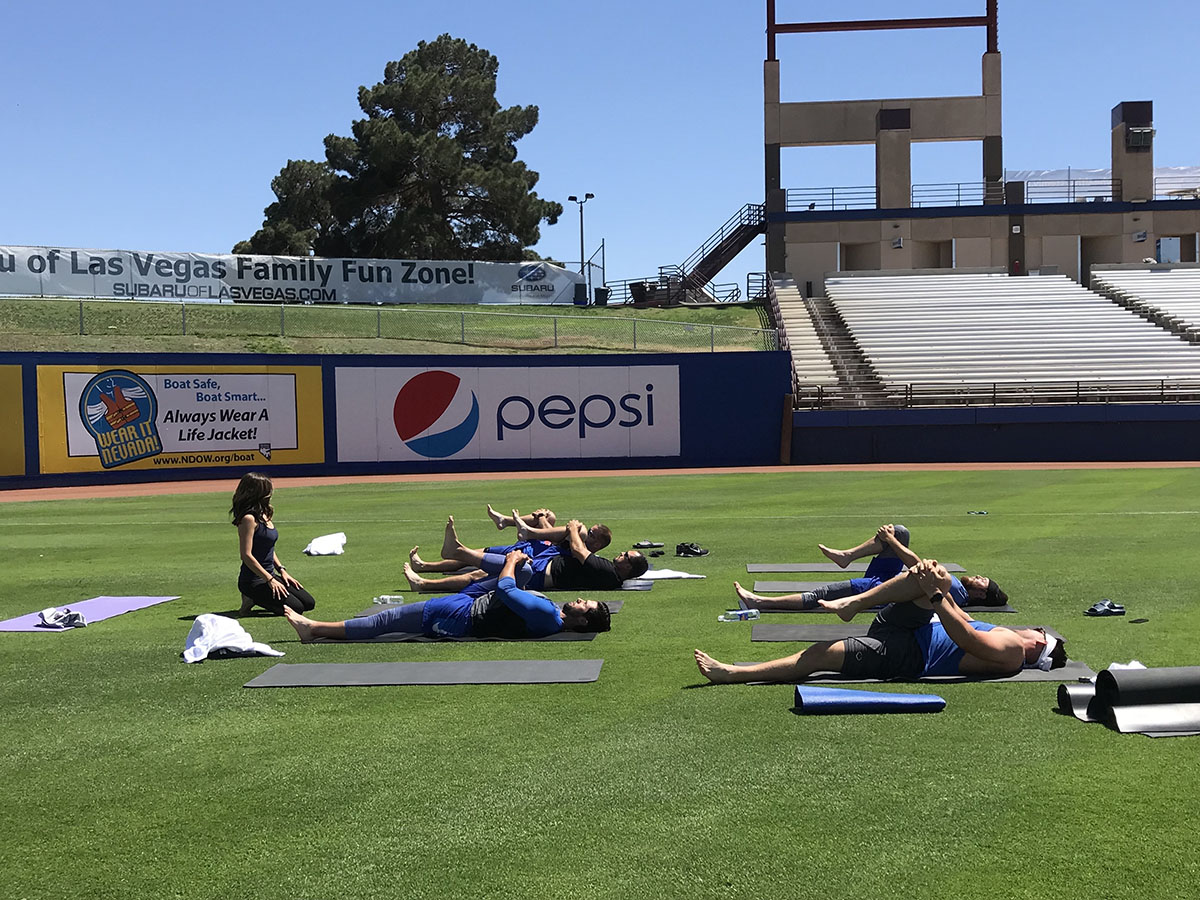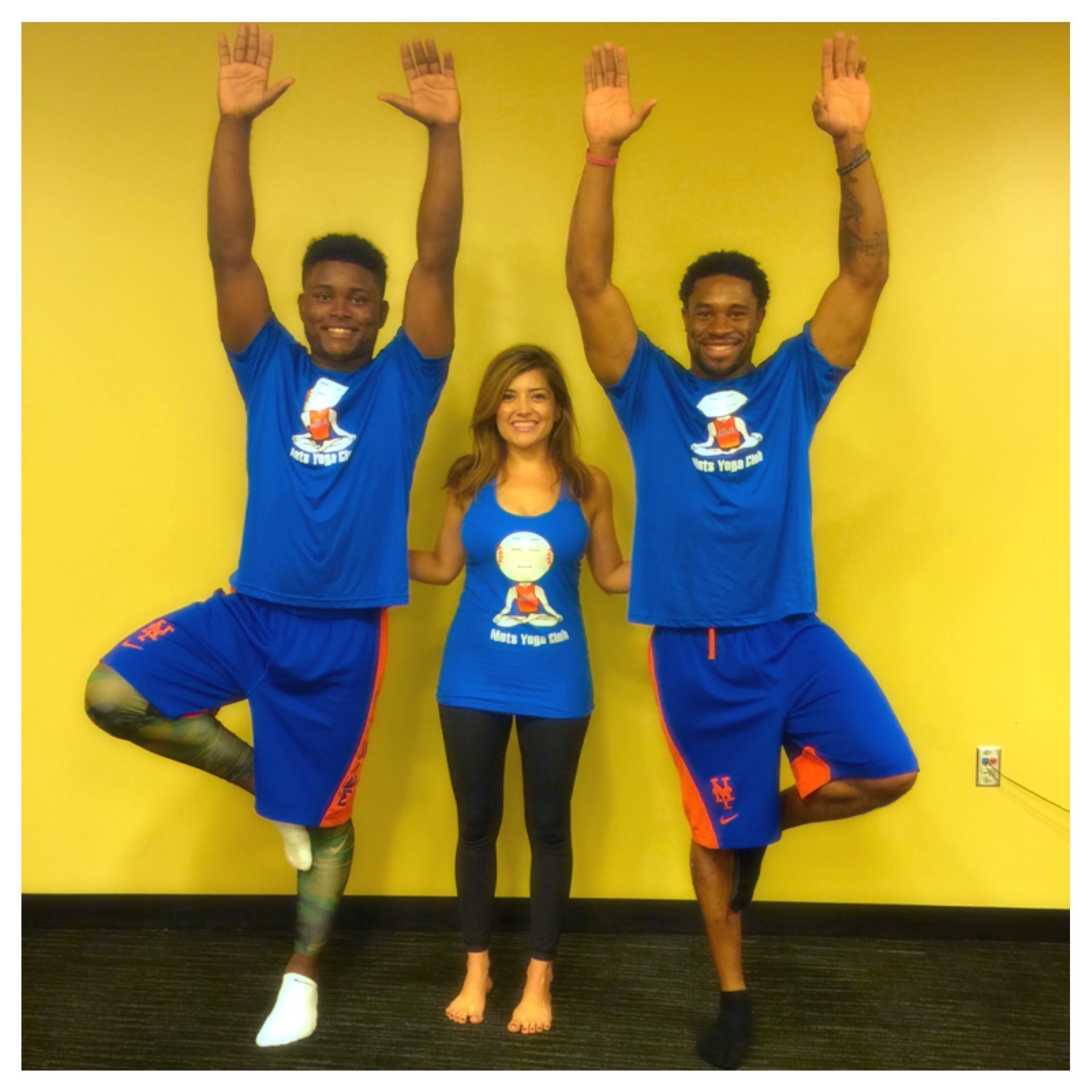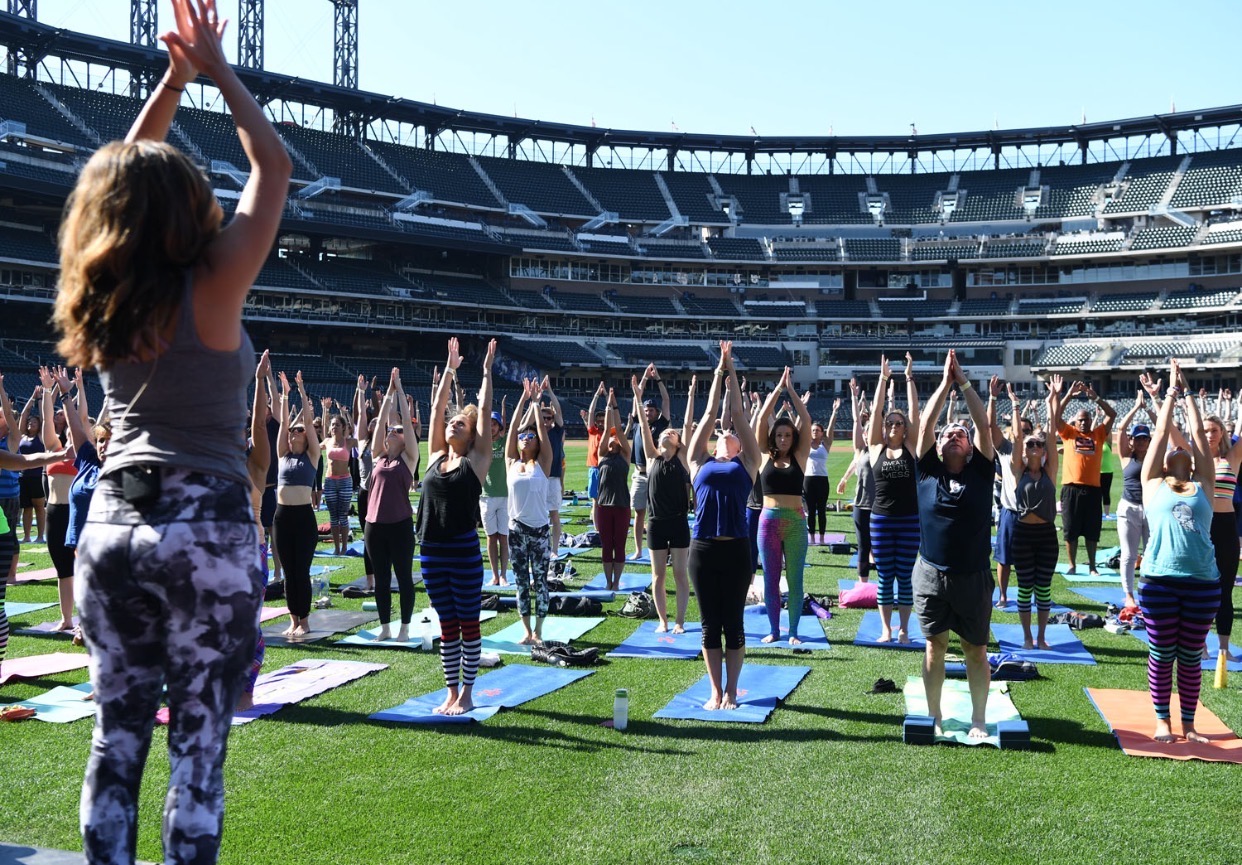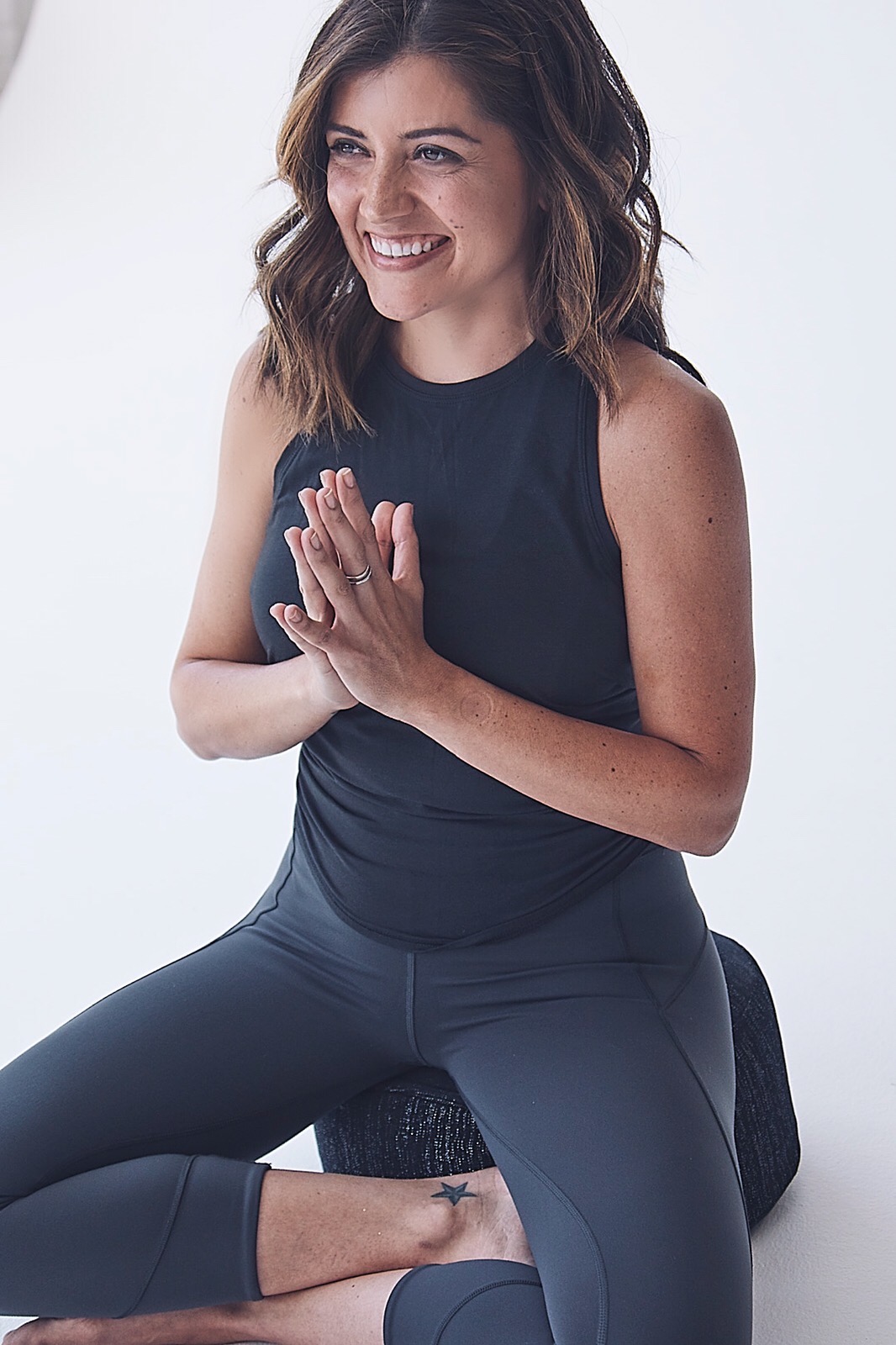Steph Armijo is the founder of Yoga 42, a yoga studio specializing in yoga instruction for professional athletes. Steph and Ben, her husband, has done some fascinating work on the intersection of yoga and motion analysis. Steph recenlty collaborated with us, bringing some of her athlete-focused classes to Yoganotch. We figured the best way to announce our collaboration would be to publish our conversation with Steph about yoga, technology their bright future.

How did you discover yoga?
I began reading about the health benefits of yoga in high school and took my first class in college. But it wasn’t until I took a beginners series of classes at a studio in Austin, TX that I really got hooked. Even then, I wanted to understand the alignment and ensure I was doing the poses correctly.
You are specialized in teaching yoga for elite athletes. How did this come to you?
Before I started teaching yoga, I worked in the baseball industry. I worked for a few teams and for MLB. I had a good understanding of the industry and the challenges that elite athletes face over the course of the season. As I learned about yoga, and how it can help the average person feel better, I wanted to bring that tool to athletes.
Teaching yoga for the Mets sounds a unique challenge. Can you tell a bit more about your experience and what you learned from working elite athletes who may not be yogis themselves?
Established athletes have routines and personal workout regimens. For the most part, there is resistance to add in training if they are not hurt. Additionally, athletes connect working hard with sweating and giving 100% to any physical challenge. It is difficult for many athletes to prioritize recovery and slower modalities that focus on breathing, meditation, etc.
I was very impressed that the athletes I worked with had a high level of proprioception. They knew their end ranges and worked within those parameters. Often, that aspect needs to be taught to novice yoga students. I always have to remind athletes that it’s ok (and healthy and necessary) to relax in a yoga class. I remind them that breathing and being present is enough, and in fact, beneficial for their overworked nervous systems.

Any favorite story to share?
I started teaching yoga to an NBA team a few years ago. They had no experience with yoga and no stretching routines in their training. I had mostly worked with baseball players up until that point and I knew what to expect from a baseball player’s mobility.
When I had the basketball team together, we were in a standard yoga forward fold. The entire class could touch the ground with their hands (which does not come easily if you have tight hamstrings). I was stunned. For a moment, I thought, these guys are doing something because they are all more flexible than the baseball players I worked with. It took me a minute to realize that they could all touch the ground because their arms are longer than average. They were just as tight as you would expect from a group that didn’t stretch!
What is your approach to designing yoga classes?
When I work with athletes, I like to establish goals for our yoga sessions. There are many considerations such as schedule, training, travel, time of games, etc that go into planning a yoga session. For the vinyasa classes I teach, I usually decide on areas of the body to focus on and then work my way backwards. For instance, if I am focusing on hamstrings, I think of all the other areas of the body that need to be stretched and warmed up when I focus on a body part.
Just because a class may have a focus on one area, it is important to keep the class well-rounded so it doesn’t feel imbalanced or missing anything at the end. For sequencing, I like changing up my classes. In my opinion, there are enough yoga poses that you don’t need to do the same thing every single day. I keep notes on my class sequences and change things up for my students. This is not only to prevent boredom, but to learn new movement patterns and to vary the load on their body during yoga.

You are using really cool technologies to help your students learn more about themselves. Can you tell us more about that?
I, like many yoga teachers, moved to an online platform in March 2020. I teach classes via zoom. I’ve been using time before and after class to conduct biomechanical screens to capture joint range-of-motion with machine learning.
My husband (ex-CTO of Motus Global and current biomechanics engineer of the Chicago White Sox), leads the development of our software platform that extracts skeletal data from 2D video using TensorFlow’s PoseNet API. Combined with manual data refinement, strict test administration, and cues to capture face-on or perpendicular-facing body data, we assess 18 range-of-motion measures in a 2 minute exam.
We provide students with their own biomechanics report after class. The utility of seeing range-of-motion before and after class has been extremely beneficial for the athletes I’ve taught; and it’s been a tremendous learning tool for me for sequencing yoga classes.
What was your experience teaching yoga during COVID-19?
There are many challenges to teaching remote yoga. For one, there is very little feedback from the group during the session as they are muted. It is really about noticing the subtle details while leading a class. You can give breath cues, but it’s difficult to tell if students are taking the time to link breath with movement to maximize each posture.
COVID-19 has been a devastating time for so many of us. When I began offering classes, I realized how important it is to have that connection that we get through yoga. The majority of my students in my online classes are my students that I taught in NYC. For months, they were on a much stricter quarantine than the rest of the country. Together, we have been through a lot in the last few months. Yoga has helped us get through the challenges of 2020.
Where do you think technology can help yoga beside Zoom?
Yoga is an ancient practice and there hasn’t been much change from generation to generation. We were taught to do these poses based off of the way they were taught when yoga was invented. The purpose of these postures initially, was to help young boys prepare for seated meditation. The alignment cues are outdated with no science behind their purpose. We know more about the body now than ever, and technology has become a part of improving our health and fitness. Technology can help us modernize the practice of yoga by using smart, safe alignment to customize the experience.
While skeletal tracking from 2D video will improve, there is a large need to understand full 3D biomechanics of yoga pose alignment. To that end, Notch sensors are some of the best IMU’s for yoga analysis. We’ve been really impressed with the kinematics computed from the sensors, and think it will really help guide yoga poses into the future.
What can we see next from your side?
We are continuing to build out our yoga biomechanics library with data from my classes. In addition to offering a biomechanics-based teacher’s training, we are working to integrate live data and more individualized sequences within yoga classes to enhance the experience.

About Steph
Steph (E-RYT 500, YACEP) is the founder of Yoga 42, formerly in the sports industry, now a yoga instructor to professional athletes offering services to individuals and teams.
- Check out Steph’s website Yoga42
- Follow Steph on Instagram: @stepharmijo
- Follow Steph on Twitter: @stepharmijo
- Try Steph’s class - get the Yoganotch App from the App Store



